
Alfred Henry Spink, a native of Quebec, published the first issue in St. Louis, Missouri, on March 17, 1886. Spink and his brothers, whose family had immigrated to the United States during the Civil War, were involved in the city’s sporting and journalism subculture. They were interested in horse racing, boxing, the stage, and baseball. They were instrumental in organizing St. Louis’s first professional baseball team, the Browns, in 1875, and soon, with the financial backing of Chris Von der Ahe, a saloonkeeper, they bought a local ballpark under the name Sportsman’s Park Club and Association. Al Spink helped establish the American Association, a major league that challenged the National League, in 1881. He worked for Von der Ahe as press agent and secretary and saw the Browns win four Association championships from 1885 to 1888.
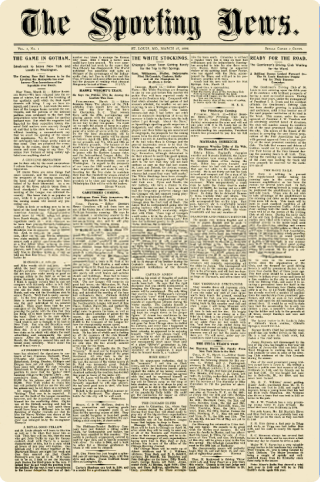
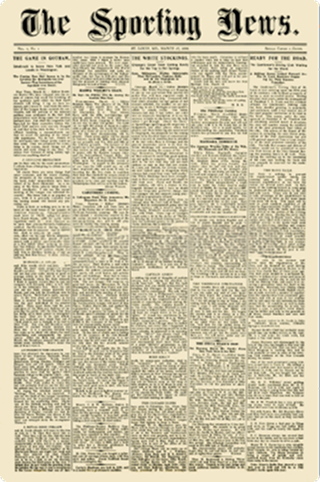
In the first issue, where it was traditional for a publisher to make a statement of editorial policy, Spink remained purposely vague: "The Sporting News intends to ignore this custom and let its readers guess out what its aims and objects are." Perhaps he had been motivated by his friend Joseph Pulitzer who had argued with him that "Given a good business manager and an editor who can really write, any newspaper should fast become a good paying institution." The debut issue, eight pages long, contained several stories about baseball, but the longest piece on Page 1 was about harness racing, and an equally interesting note concerned professional wrestling. Subscription rates were set at $2 a year (a single copy was five cents), and advertising cost 20 cents per agate line. The newspaper was an immediate success, so much so that Spink soon buckled under the weight of multiple duties. He summoned his younger brother Charles to abandon a homesteading adventure in South Dakota for a $50 a week offer as business manager. In May 1886, the paper proclaimed that it had "the largest circulation of any sporting paper west of Philadelphia." In October 1887, just a year and a half later, the publisher boasted that circulation stood at 40,000.
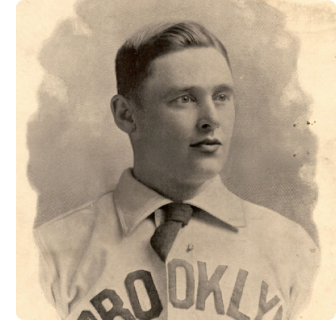
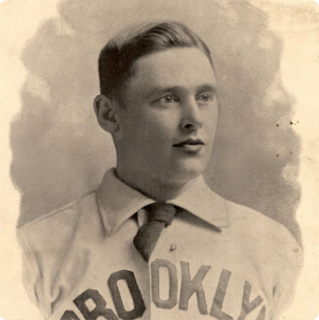
Slowly, baseball news began to dominate its pages although other sports were not excluded. Starting in early 1887, the paper devoted a separate section to each professional baseball league and then, over the next few months, was named the "official organ" of three minor leagues. Charles Spink, who took a larger editorial role after 1890, crafted these relationships. In fact, Al’s interest in the paper waned as he turned to his other passion, the theater. He wrote and produced a play, The Derby Winner, that required a cast of 42 persons and six horses. It was a success in St. Louis, but on the road, the play flopped, and Al was wiped out financially. He used his The Sporting News stock as collateral for loans he could not repay. Charles bought the stock, and the two brothers feuded, reconciling just before Charles died in 1914.
Gradually, the paper devoted even more space to baseball. Charles was assisted in this transition by the paper’s first non-Spink editor, Alonzo Joseph Flanner, a lawyer, a journalist, and a leader in the campaign to rid baseball of gambling, liquor peddling in the stands, and assaults against umpires. Flanner’s crusade had an ally in Byron Bancroft Johnson, then in the process of turning the minor Western League into the major American League. The Sporting News supported Johnson and earned his lifelong appreciation. In 1903, Flanner helped draft the National Agreement that brought peace between the two major leagues and paved the way for the modern World Series. Type for the agreement was set in The Sporting News office. By 1910, all sports but baseball had been squeezed out of its pages. The masthead now read: "Official Organ, National Commission, Authority of Game."
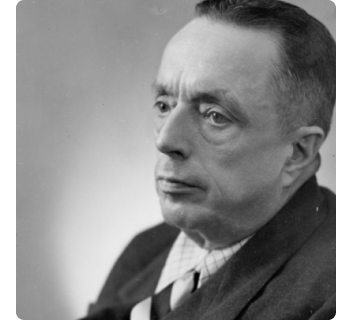
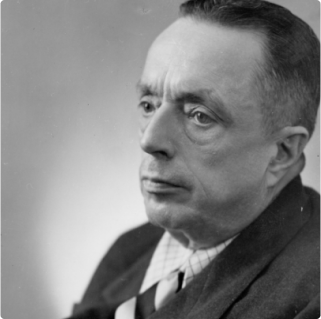
Upon Charles’ death, control of the company passed to his son, John George Taylor Spink. He was born in 1888 and first worked for the paper in 1909, just a year before Ring Lardner served a tumultuous seven-week stint as editor. Young Taylor, enthusiastic to a fault, had bombarded Ban Johnson’s office with a barrage of telegrams asserting his willingness to serve as official scorer for the World Series. Johnson consented partly out of exasperation and partly out of affection for the Spink family. Taylor reciprocated the favor. He and his wife honored both his father and Johnson by naming their only son Charles Claude Johnson Spink.
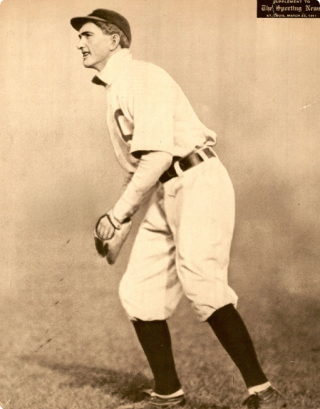
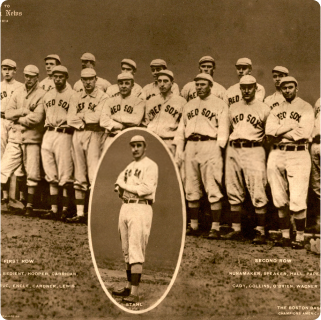
After the United States entered the First World War in April 1917 by declaring war on Germany, The Sporting News joined with Organized Baseball to present a patriotic front. Players performed military drills before games, shouldering bats instead of rifles. Washington Senators owner Clark Griffith organized the Bat and Ball Fund, accepting no contribution larger than twenty-five cents and raising over $75,000 to send baseball gear and other sporting goods to troops overseas. Spink persuaded Johnson to have the American League buy copies of the weekly at reduced rates and send them overseas at the league’s expense. Initially, 150,000 copies of the paper were shipped every week, but individual clubs made additional purchases. After the Armistice in November 1918, New York Yankees co-owner Til Huston suggested to Johnson that copies of The Sporting News be shipped to France for American soldiers to read as they embarked for home.
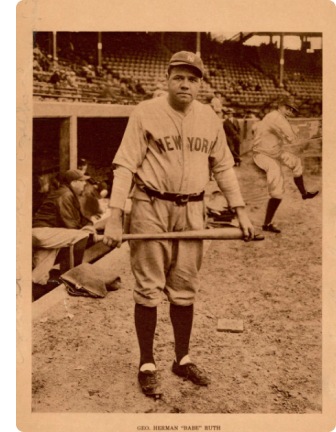
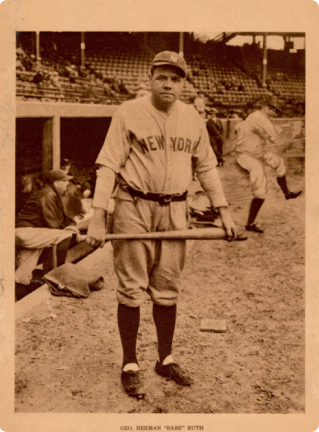
In the 1920s, The Sporting News acquired its unofficial nickname. As the story goes, the Spinks were on vacation in Cherbourg, France, waiting to board an ocean liner when a voice from the bridge hailed the publisher. It was a baseball executive named Jack Potter, and there was a copy of The Sporting News in his pocket. Potter turned to the captain of the ship and said, "There is the man who wrote the Bible." "Who is he," asked the captain, "Matthew, Mark, Luke or John?" "That’s Taylor Spink," Potter replied," and he writes the Baseball Bible."
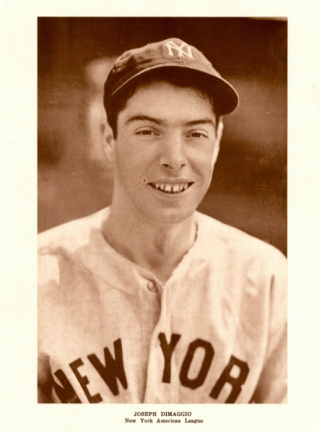
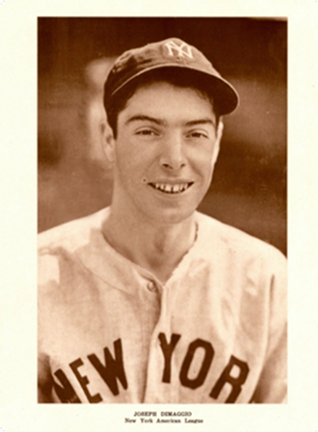
The Sporting News prospered over the next 30 years, driven as it was by Taylor Spink. Its history became intertwined with that of baseball itself, so that no one in any sector of the game could be fully informed without reading it every week year-round. Its list of correspondents, recruited from the staffs of newspapers throughout the country, read like a Who’s Who of American sports journalism. Its stories gave readers the "inside dope" on the game, information they could find nowhere else, and its editorial voice was cautious and conservative, protective of the institution it covered.
The era was not without significant blemishes. The Sporting News was a voice against the integration of baseball in the years leading up to Jackie Robinson breaking the color barrier in 1947. The publication gradually softened its stance before eventually fully embracing an integrated MLB.
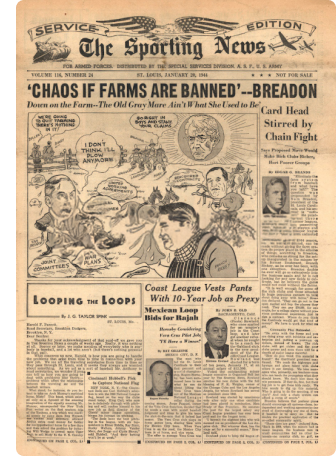
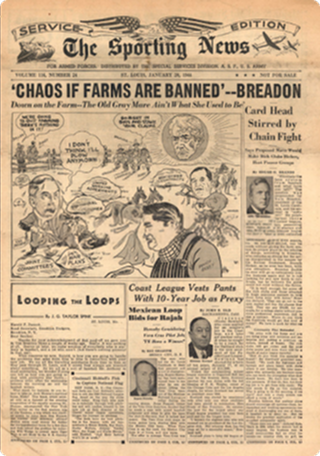
After the United States began to mobilize following the Japanese attack on Pearl Harbor in December 1941, Organized Baseball and The Sporting News were in a quandary. Would baseball continue during the war? When President Franklin Roosevelt wrote his famous "Green Light" letter in which he said, "I honestly feel it would be best for the country to keep baseball going," the weekly published the letter on Page 1 and showered FDR with admiration. Spink persuaded the War Department to authorize a special eight-page overseas edition to be flown each week to American troops overseas. The publisher also contracted with the Liggett & Meyers Tobacco Company to produce a similar edition, sponsored by Chesterfield cigarettes, for distribution to military installations and veterans’ hospitals in the United States. Both military editions were printed in the tabloid size to save ink and paper, and the weekly adopted this format in July 1943 for its regular edition.
The September 17, 1942, issue changed the paper’s editorial focus forever. In an announcement at the bottom of page 5 were the words: "Football Next Week." Before the end of the year, stories about football were joined by coverage of professional hockey and college basketball, both introduced as their seasons began. Expanding the editorial focus found acceptance among subscribers.
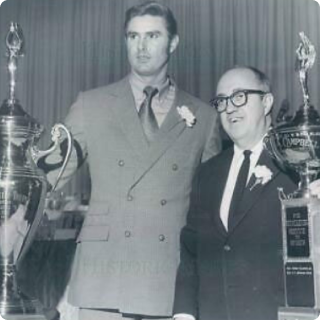
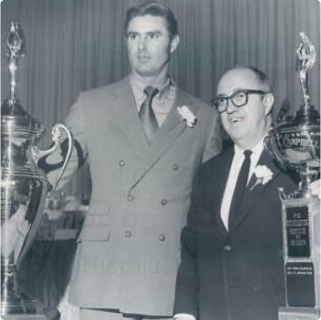
In 1946, Spink introduced an eight-page publication, The Quarterback, printed on peach-colored paper. It ran for twelve issues and came back the following fall both as a separate publication and as an insert to The Sporting News. At the conclusion of each football season, The Quarterback became The All-Sports News with stories on basketball, hockey and boxing. Each spring coverage of these sports ended abruptly in favor of baseball just as major league teams headed off to spring training.
This arrangement remained intact until 1963. By this time, the paper was in the hands of the fourth and last member of the founding family, C. C. Johnson Spink. Taylor had died in December 1962 of a heart attack after having been plagued for years by emphysema. Johnson had been working for the company since 1939 with time out for service in the navy during World War II, so he was no newcomer when assumed his father’s mantle and began to push the publication into modernity. The last All-Sports News appeared on March 2, 1963. The following week stories about basketball and bowling were incorporated into the rest of the paper. Challenged by Sports Illustrated, a very successful magazine that had made its debut in 1954, coverage gradually increased from "in-season" to "year-round" and expanded to embrace golf, tennis, horse racing, auto racing, and soccer. Moreover, Johnson Spink abandoned his father’s practice of laying out the front page with text and a cartoon, replacing it with photographs and bold headlines. Shortly thereafter, the publication began to use color photographs on its cover.


In 1977, the Spink family sold the business to the Times Mirror Company, parent company of the Los Angeles Times. The transaction included the flagship publication as well as The Sporting Goods Dealer, a monthly trade magazine, and annual guides and registers to baseball, football, basketball and hockey. Shortly after the purchase, the editorial product line expanded once again with the introduction of the "Baseball Yearbook," the first in a series of pre-season preview magazines with slick paper covers, and later with a series of coffee-table books designed to appeal to a wide audience.
In April 1980, Marge German, the wife of one of the Americans held hostage by Iranian revolutionaries, asked The Sporting News if the paper could be sent to all the hostages. Johnson Spink responded that the State Department had already arranged to ship five copies of each week’s issue. Those copies, in the words of Bruce German, proved to be "a godsend." Apparently, the Iranians believed that a sports publication would contain nothing they wanted to prevent their captives from learning. "We read every word, passed the paper around till it was tattered," German said. "Of course, it kept us informed on everything in sports, but you’d be amazed at the bits of pieces of general news we picked up from the paper."
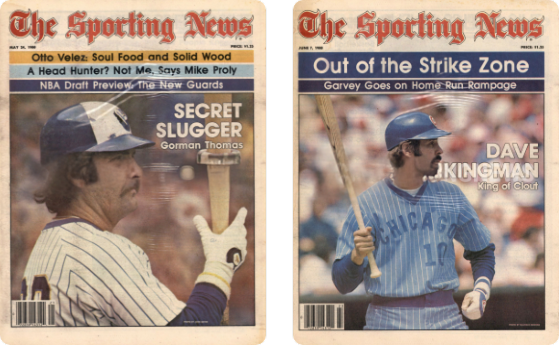
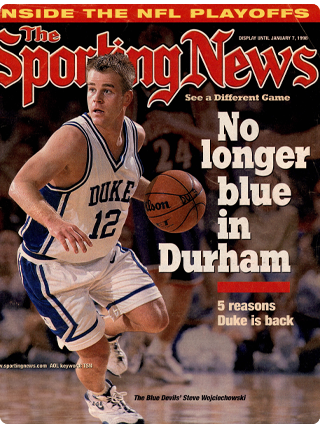
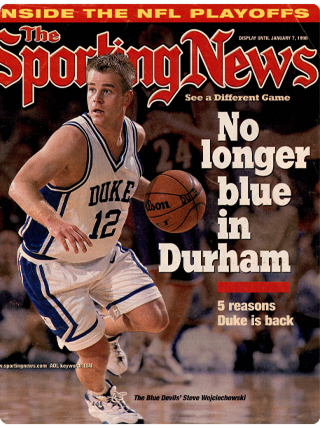
In 1991, The Sporting News underwent a major facelift under the leadership of editor John Rawlings. His goal was to transform a weekly newspaper into a modern magazine. The editorial focus was narrowed to the "Big Six": baseball, pro and college football, pro and college basketball and hockey. The magazine's size changed slightly, its paper stock improved, and the use of color and graphics increased dramatically. In April 1996, the company entered the world of cyber-publishing. Its content area on America Online was voted one of AOL's "Best New Areas" for the year. In January 1997, the company introduced its website, https://www.sportingnews.com. A year later, this site won a National Magazine Award for "Outstanding Achievement, General Excellence, New Media." Over the following years, the magazine made additional changes to its content and style, all the while remaining dedicated to attracting serious sports fans. Many of its best stories bore the logo, "See a Different Game."
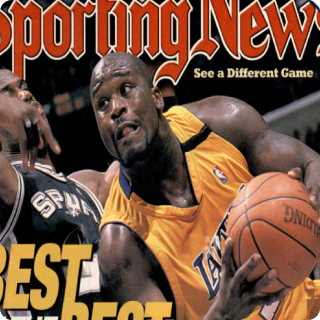
Late in 1999, the Times Mirror Company announced its intention to sell The Sporting News, and in February 2000, Vulcan Ventures, the investment organization of billionaire Paul G. Allen, emerged from a field of competitive bidders. When the sale closed on March 31, The Sporting News became part of Vulcan Print Media, which became Vulcan Sports Media with the additional purchases of SmallWorld Fantasy Games and the One-on-One Sports Radio Network (later The Sporting News Radio Network).
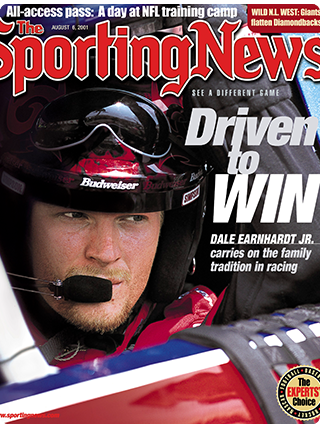
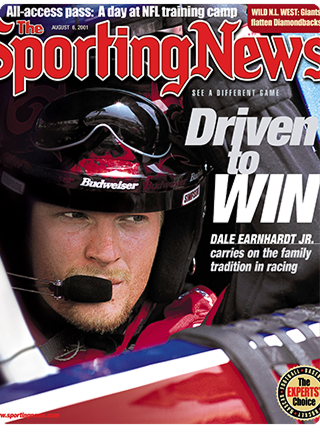
In 2001, the weekly magazine added coverage of NASCAR to its editorial mix, a move that brought a boost in advertising revenue in an increasingly competitive market. Allen’s vision for a "wired world" proved premature, and in October 2006, he sold the company to American City Business Journals of Charlotte, North Carolina. Publication of books and the guides and registers was discontinued.
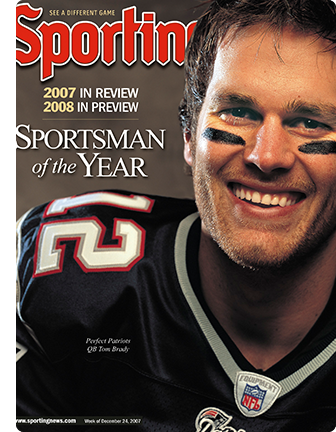
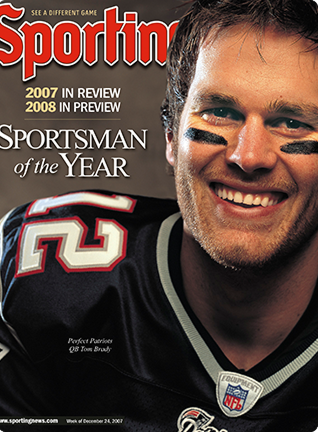
In July 2007, the staff of the website moved to corporate headquarters in Charlotte, and a year later, the company’s print editorial offices followed. The magazine switched to a biweekly publication schedule and placed increasing emphasis on its website and on a daily web-only publication, The Sporting News Today, delivered via email.
After 126 years, in December 2012, The Sporting News published its final edition as a print publication and has continued as a digital-only service. ACBJ sold its residual stake in The Sporting News to Perform (later to become DAZN) in 2015.
In 2020, The Sporting News was acquired from DAZN, by an investment and operating consortium, led by Pax Holdings, a British family office who acquired the main www.sportingnews.com US-facing business along with Canadian, Australian and Japanese country-specific sites. Current management is undertaking an overhaul and expansion of the business, increasing editorial coverage and adding multiple new territory editions.
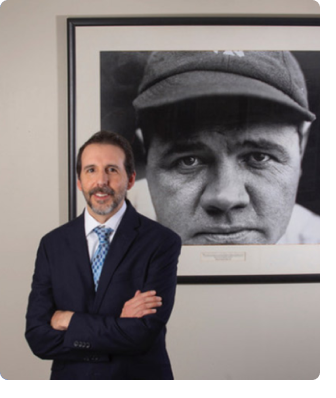
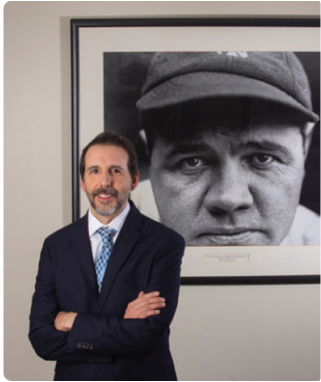
Benson Taylor is only the 15th Editor-in-Chief of TSN in its almost 140 years of existence and has oversee the global editorial expansion and introduction of new language editions.